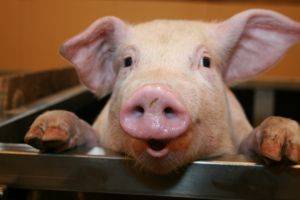Prevention of African swine fever is carried out in hunting farms of Russia
It's like hunting, only the task is not to kill the beast, but to take a medical test from it. To do this, the animals are first fed and closed in a corral, and then you need to scare the boar properly so that he drives himself into a trap out of fear.
Veterinarians can now swab the animal. Recently, doctors are forced to do this more and more often. Already in two regions of RUSSIA, new outbreaks of African swine fever have been recorded. And this is a worse enemy for wild boars than wolves, tigers and even poachers.
“Three samples were taken, this is a sufficient number to judge the condition of the animals and confirm their well-being,” said Andrey Belotserkovsky, chief veterinarian of the Zavyalovsky inter-district animal disease control station.
In Udmurtia, they are trying to prevent the situation, as in the Far East. There, so many wild boars died from this disease that the Amur tigers lost their food supply and are now forced to hunt in the villages. Last year, Udmurt veterinarians took samples from five thousand individuals, both wild and domestic pigs, all negative. So far, not a single case of plague has been detected in the region. But the risks are very big. After all, neighbors in Tatarstan, the Perm Territory, Bashkiria, Nizhny Novgorod, Samara Regions have outbreaks of this infection almost every year.
“And when the doctors arrive, we catch them and check them ourselves, we take samples for analysis,” said huntsman Sergei Kozlov.
In order to detect and contain the virus in time, not only on farms, but also in the wild, rangers are combing the forests using a quadrocopter. Dead animals are identified and biological samples are taken. So, last year more than 30 carcasses of wild boars were sent for analysis.
Hunters, having obtained a wild boar, are also required to hand over the MEAT for analysis. The African swine fever virus is very persistent. In frozen meat, he can live up to six years, and in the soil where sick animals lay - from four to eight months. And it is extremely contagious - it is transmitted through food, blood and through the air. Both insects and humans can become carriers.

